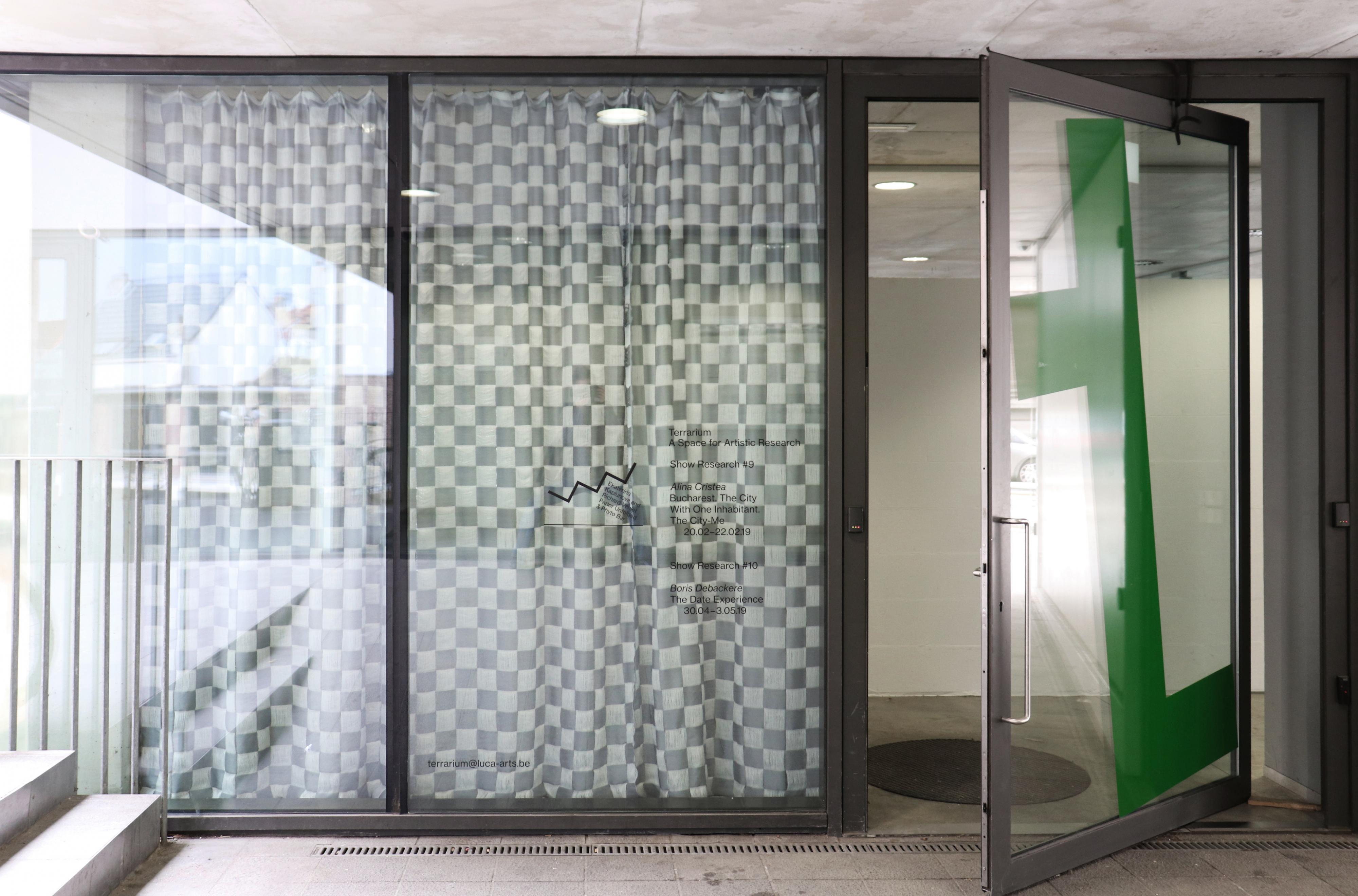
A terrarium is a relatively contained space designed to create a delimited environment for experimentation and research. It was first developed in the field of botany in the mid 19th century and later used in other fields of biology and ecology. The Terrarium of Campus Sint-Lukas Brussels is conceived as a space for artistic research, where students and researchers on campus can experiment with how their creative work interacts with the specific environment, allowing their research to grow and develop in new directions.
The structure of this space is composed of two glass vitrines forming the longer sides, there are also four fixed internal walls. One mobile wall can eventually divide the central area into two.The Terrarium is visible from the inside of the school as the internal vitrine gives onto the central court, while the external vitrine gives onto the street, making it visible from the outside of the school. This specific in between position is ideal, making the Terrarium a venue for inward reflection on what is generated within the school and outward engagement with the questions and challenges coming from the context of Brussels. The Terrarium host a selection of plants that have played an important role in the history of art, such as Matisse’s Monstera and Broodthaers’ Kentia Palms. Their presence is meant to disrupt the white cube exhibition logic and to signal the alliance between human creativity and the intelligence of plants.
The Terrarium Talks offer a diverse view of what having an artist’s practice means today. Our guests talk about one or more artistic projects after which the public is invited to join a discussion.